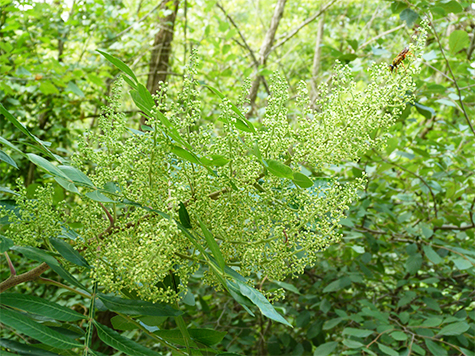
Dwarf sumac was in bloom this past week along the north side of the Wetlands. There were many insects visiting the tiny greenish flowers. Here, in the photos below, are a handful of those visitors.
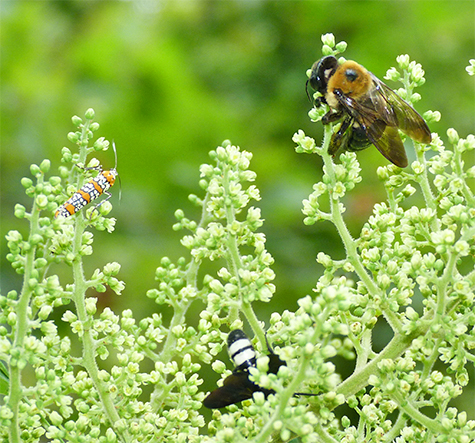
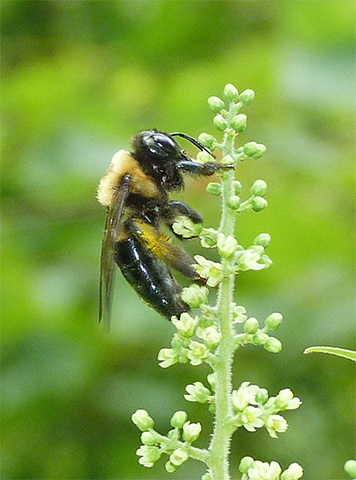
Carpenter bees drill holes in trees, or the wood facia or siding of your house, creating separate chambers within the tunnels, and stocking each chamber with pollen and nectar. They lay an egg in each chamber and seal it off. The young that subsequently hatch feed on the nectar and pollen mixture, pupate and emerge as adult carpenter bees.
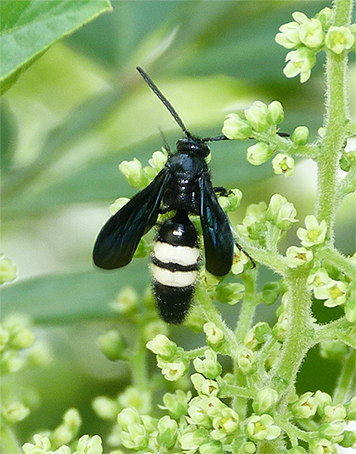
Female double-banded scoliid wasps dig into the ground in search of beetle larvae, or grubs. I don’t know whether they can hear or feel the grubs beneath them but they seem able to find the grubs with consistency. It’s remarkable, how they locate the grubs, but not surprising. It is, after all, what they do.
Once located, the wasps sting the grub, paralyzing it. The female may then lay an egg on the grub. When the egg hatches the larva will feed on the grub, pupate and emerge as an adult wasp.
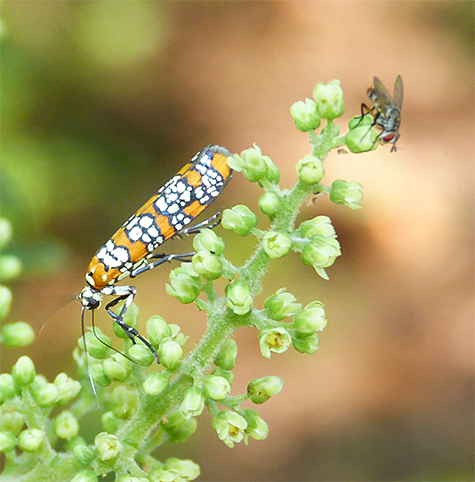
The small, colorful ailanthus webworm moth is native to south Florida and South and Central America. It gets its common name from one of the trees it uses as a food plant for its larvae, Tree-of-Heaven (Ailanthus altissma). Tree-of-Heaven is a very fast growing invasive tree native to Asia which during the 1700s was introduced to North America as an ornamental tree. It was once planted along city streets.
Over the years, as the Tree-of-Heaven increased in numbers, and moved north, so did the moth.
They’re attractive moths and very common in our area.
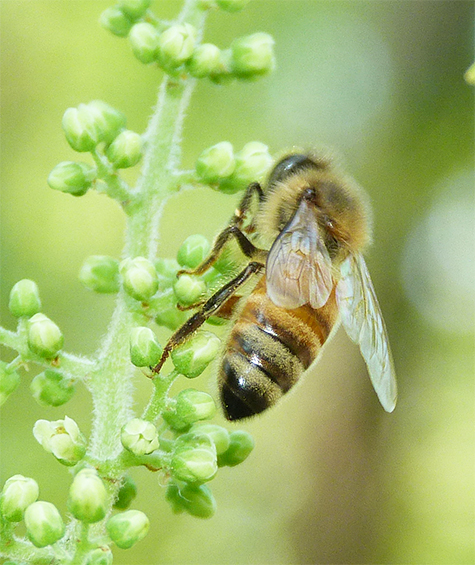
Who does’t know what a honey bee is and what they do. This one is probably from the hive in the Insectarium here at the Museum.
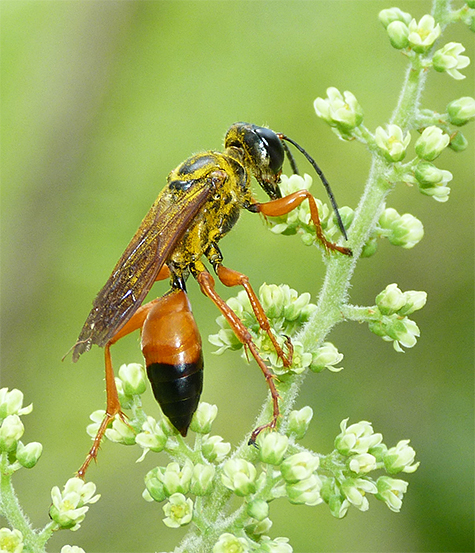
None of the wasps shown here are likely to sting, unless of course you pick it up and handle it roughly, or sit on it accidentally. That said, I’m always a bit more cautious around great golden digger wasps. They, like all of the other solitary wasps (those that nest singly, unlike the social nesting yellow jackets and hornets), are not aggressive and usually need serious provocation before they will sting. But, take another look at the photo above. This wasp looks dangerous. Although I know better, and know they won’t likely chase after and sting me, I don’t poke a finger at great golden diggers as I would other solitary wasps, or at least poke at them as often.
Female great golden digger wasps burrow underground creating multiple chambered tunnels in which to lay eggs. Before the eggs are deposited, she stocks the chambers with orthoptera (grasshoppers, katydids, crickets) which her larvae will eat upon hatching.
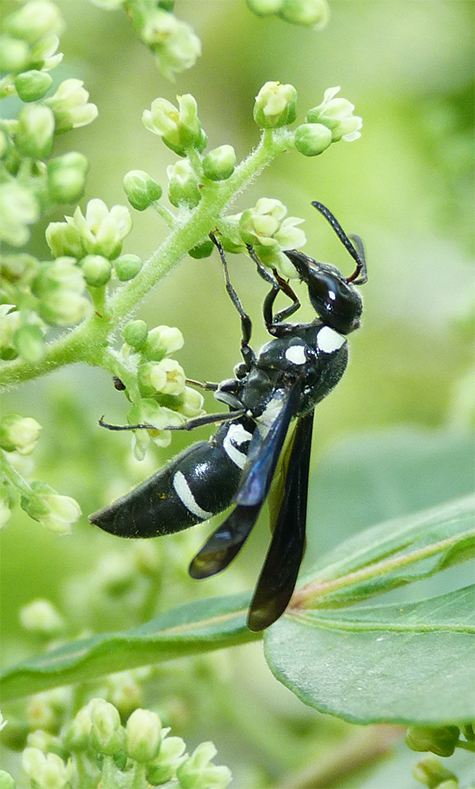
The Psuedodynerus quaddrisectus is a mason wasp. This mason wasp burrows into wood and stocks the borings with live caterpillars for, you guessed it, feeding its young after the larvae hatch from the eggs deposited into the separate chambers of the burrow. The wasps seal the different chambers within the borings, and eventually the original entrance to the burrow, with masonry (clay and mud), which is why they’re called mason wasps.
All of the insects above are what may be considered by us humans as beneficial. The wasps all consume, as larvae, insects that eat plants that we attempt to grow and perhaps eat ourselves. All of the insects here do a good bit of pollinating the plants that we grow for our enjoyment and food (carpenter bees also drill through the wood of our homes, which is not beneficial). The honey bees make honey that we use for food. And, the moth eats a plant which is considered a pest tree, Tree-of-Heaven.
Fun to watch and good for us too!